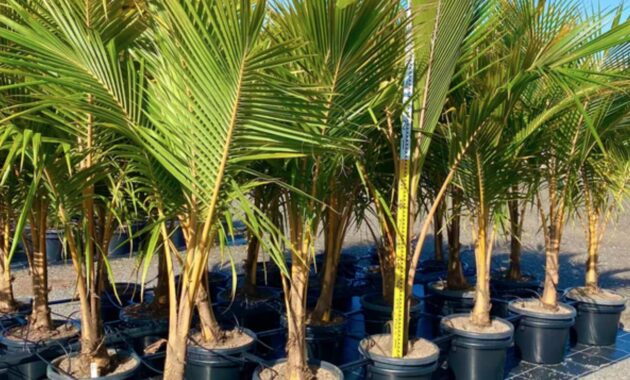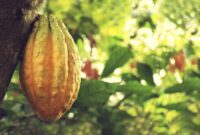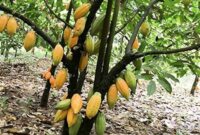
Ah, the Cocos nucifera, or as most of us know it, the coconut tree. When I think of tropical paradises, palm-fringed beaches, and the sound of waves lapping against the shore, the image of the coconut tree comes to mind. This incredible plant is more than just a pretty face in the tropics; it’s a powerhouse of resources and benefits that have captured the hearts of many around the world.
What is Cocos Nucifera?
The coconut tree is a member of the palm family and is native to coastal areas of the tropical regions. It can grow up to 30 meters (about 98 feet) tall and is known for its slender trunk and large, feathery fronds. One of the things I find fascinating about the coconut tree is its ability to thrive in sandy soil and withstand salt spray, making it perfectly suited for beach environments.
Key Characteristics of Cocos Nucifera:
- Scientific Name: Cocos nucifera
- Common Names: Coconut tree, coconut palm
- Height: Typically grows between 20-30 meters (66-98 feet)
- Leaves: Large, pinnate leaves that can reach 4-6 meters (13-20 feet) in length
- Flowers: The coconut tree produces small, creamy white flowers that grow in clusters. Each flower can be either male or female.
The Lifecycle of the Coconut Tree
The lifecycle of the coconut tree is a captivating journey that begins from seed to maturity:
- Seed Germination: The coconut seed, or the hard-shelled coconut we all recognize, needs proper conditions to sprout. If you ever try to germinate a coconut, you’ll need to soak it in water for a few days. I remember my first attempt, and after a few weeks, I was thrilled to see a tiny shoot poking out of the shell!
- Young Plant Development: Once germination occurs, the coconut seedling begins to grow. It can take anywhere from 3-6 months for the seedling to develop a strong root system and produce its first leaves. The small, delicate fronds are a promising sign that your plant is on the right track.
- Maturity: Coconut trees take about 6-10 years to start producing fruit. Patience is essential! I learned this the hard way when I planted a coconut seed, eagerly awaiting my first harvest, only to find out that it would take years before I could enjoy the fruits of my labor.
- Fruit Formation: Each tree can produce 30-75 coconuts per year once it reaches maturity. The fruit grows in clusters, and watching those little green coconuts develop into the familiar brown, hairy ones is truly rewarding.
- Harvesting: When the coconuts are ripe, they are harvested by skilled workers who climb the trees using ropes or ladders. I’ve seen this done in tropical regions, and it’s an impressive sight. The coconuts are then collected for various uses.
Culinary Uses of Coconuts
Coconuts are incredibly versatile and can be used in countless culinary creations. Here are some of my favorite ways to enjoy coconuts:
- Coconut Water: This refreshing drink is not just for fancy cocktails; it’s a hydrating beverage packed with electrolytes. I often drink coconut water after a workout; it’s a natural way to replenish!
- Coconut Milk: Made by grating the flesh of mature coconuts and mixing it with water, coconut milk is a staple in many cuisines, especially in Southeast Asia and the Caribbean. I love using it in curries and soups for that rich, creamy texture.
- Coconut Oil: This multipurpose oil has taken the health world by storm. I use coconut oil for cooking, baking, and even as a moisturizer. Its high smoke point makes it great for frying, and its sweet, nutty flavor adds a delightful twist to dishes.
- Desiccated Coconut: Shredded and dried coconut is perfect for baking. It’s become a favorite ingredient of mine for cookies and granola bars, adding both texture and flavor.
- Coconut Cream: This thick, rich cream is a byproduct of making coconut milk and is fantastic for desserts. I once whipped up a coconut cream pie that left my friends raving for days!
Health Benefits of Coconuts
Coconuts are not just delicious; they’re also packed with health benefits that make them a fantastic addition to your diet:
- Rich in Nutrients: Coconuts provide essential nutrients such as vitamins C, E, and B vitamins, along with minerals like potassium and magnesium. I often feel energized after enjoying coconut-infused dishes!
- Healthy Fats: The fat content in coconuts is primarily medium-chain triglycerides (MCTs), which are known for their quick absorption and energy-boosting properties. I’ve found that incorporating coconut oil into my meals helps sustain my energy throughout the day.
- Hydration: Coconut water is an excellent source of hydration, especially in hot climates. It’s low in calories and contains no added sugars, making it a great alternative to sugary drinks. I always keep a few coconuts on hand for hot summer days!

Growing Your Own Coconut Tree
If you’re inspired to grow your own Cocos nucifera, here are some essential tips I’ve gathered over the years:
- Climate Requirements: Coconut trees thrive in tropical climates with plenty of sunlight and humidity. They prefer temperatures between 20°C to 30°C (68°F to 86°F). If you live in a cooler region, consider growing your coconut tree in a greenhouse or indoors.
- Soil Conditions: Coconuts prefer well-draining, sandy soil rich in organic matter. I’ve learned that proper drainage is crucial to prevent root rot. Mixing sand with compost can create the perfect growing environment.
- Watering: Young coconut trees need regular watering to establish a strong root system. However, once established, they are fairly drought-tolerant. I usually water my young trees every few days until they are firmly rooted.
Caring for Your Coconut Tree
Caring for your coconut tree is essential for healthy growth. Here are some tips I’ve found helpful:
- Fertilizing: Coconuts benefit from regular feeding. I recommend using a balanced fertilizer every 2-3 months during the growing season. This practice has kept my trees healthy and productive!
- Pruning: While coconut trees require little pruning, removing dead fronds can help maintain a clean appearance and promote airflow. I often do this during the dry season.
- Pest Management: Coconut trees can be susceptible to pests like the coconut weevil and scale insects. Regular inspections and organic pest control methods, such as neem oil, can be effective. I’ve had success with this approach, keeping my trees healthy and pest-free.
Common Challenges in Growing Coconut Trees
While growing coconut trees can be rewarding, it’s not without its challenges:
- Slow Growth Rate: Coconut trees can take several years to mature and produce fruit. I’ve had moments of frustration waiting for my trees to bear fruit, but the anticipation is part of the journey!
- Disease Susceptibility: Coconut trees can be prone to diseases such as lethal yellowing and bud rot. Regular monitoring and maintaining good cultural practices are essential for preventing these issues.
- Environmental Sensitivity: Coconuts are sensitive to extreme weather conditions, especially high winds and salt spray. If you live in a coastal area, planting them behind a windbreak can help protect them from harsh elements.
Final Thoughts
Cocos nucifera, or the coconut tree, is truly a gift from nature. From its delicious fruit to its numerous culinary and health benefits, the coconut tree embodies the spirit of tropical paradise. Whether you’re sipping coconut water on a hot day or cooking with coconut oil, this plant brings joy and nourishment to our lives.
So, if you ever get the chance to grow your own coconut tree, take it! The journey from seed to fruit is filled with excitement, anticipation, and a deep appreciation for nature’s wonders. And who knows, maybe one day you’ll be enjoying fresh coconuts right from your own backyard!
Let me know if you’d like more information or if there are other topics you want to explore!



